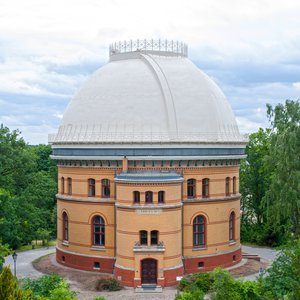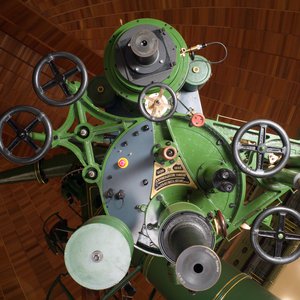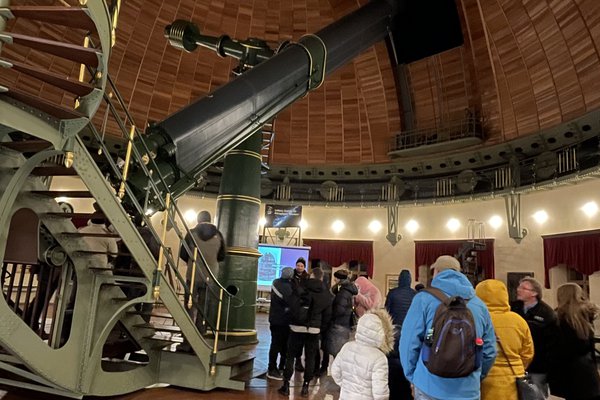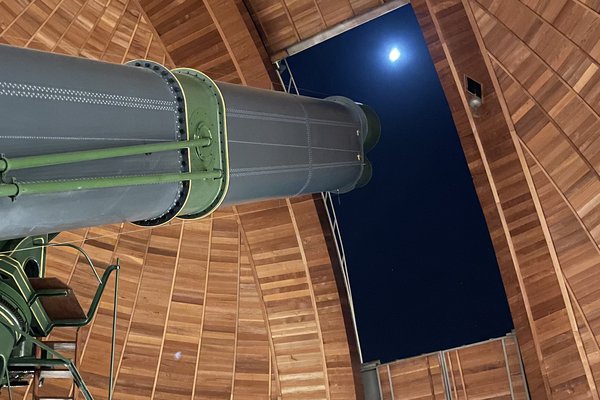Great Refractor
Overview
Inaugurated in 1899 in the presence of the Emperor, the Great Refractor is still the fourth-largest refracting telescope in the world and combines the mechanical possibilities of the time and the astrophysical requirements that were then only just emerging – especially in the field of spectroscopy.
The telescope is a double refractor with two permanently connected telescopes on a parallactic mount. The larger tube has an 80-centimetre objective and a focal length of 12.2 metres. The smaller tube, intended for visual observations, has a diameter of 50 centimetres and a focal length of 12.5 metres. The diameter of the 200-tonne rotating dome is 21 metres. A scientific highlight in the history of the Great Refractor was the discovery of the interstellar medium in 1904 by Johannes Hartmann, through observations of stationary calcium lines in spectroscopic binary stars. After war damage in 1945 and a subsequent modernisation in 1953, the Great Refractor eventually ceased operation completely in 1968.
Thanks to generous donations, greatly aided by the specially founded “Förderverein Großer Refraktor Potsdam e.V.” association, the heritage-protected telescope was extensively renovated over several years.

The Great Refractor on the Telegrafenberg.
Credit: AIP
Interior view of the dome.
Credit: AIP
Close-up of the instrument.
Credit: AIP
Visits & guided tours
Visitors have the opportunity to visit the Great Refractor as part of a guided tour, see Visiting the Great Refractor. There you can also find the current dates for our popular observation evenings.
Information on how to get there can be found here: Directions Telegrafenberg.

The impressive large refractor is worth a visit.
Credit: AIP
If the weather permits, it's recommended to take a look at the sky through the historic telescope.
Credit: AIP